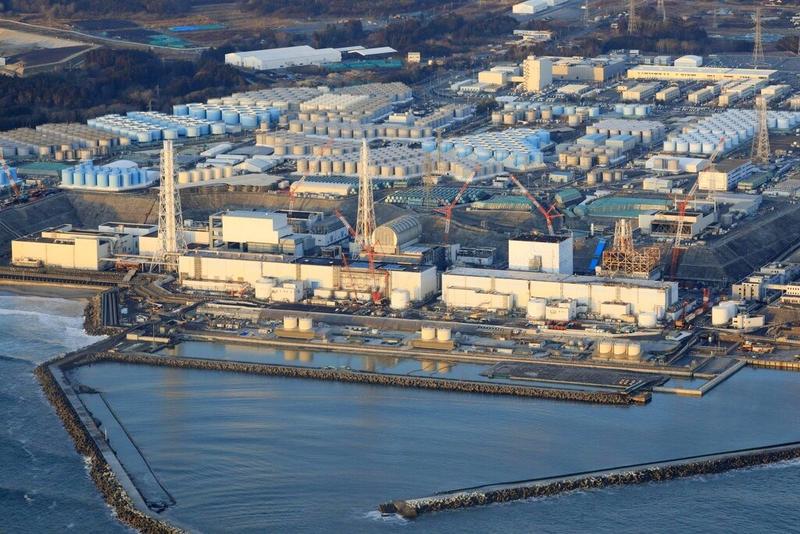 This aerial photo shows the Fukushima Daiichi Nuclear Power Plant operated by Tokyo Electric Power Company (TEPCO) in Okuma town, Fukushima prefecture, northeastern Japan, on Feb 14, 2021, a day after a strong earthquake. (HIRONORI ASAKAWA / KYODO NEWS VIA AP)
This aerial photo shows the Fukushima Daiichi Nuclear Power Plant operated by Tokyo Electric Power Company (TEPCO) in Okuma town, Fukushima prefecture, northeastern Japan, on Feb 14, 2021, a day after a strong earthquake. (HIRONORI ASAKAWA / KYODO NEWS VIA AP)
The operator of the Fukushima Daiichi Nuclear Power Plant on Sunday found that the pressure inside one of the reactor containment vessels had dropped, raising concern over additional damage and further complicating the plant's already difficult decommissioning process.
Tokyo Electric Power Company, or TEPCO, confirmed that pressure inside the vessel of its Unit 1 reactor had dropped. It said the reason for the drop was probably an earthquake that hit the area on Feb 13
In an official statement on its website, Tokyo Electric Power Company, or TEPCO, said it confirmed that at around 6 pm on Sunday, pressure inside the vessel of its Unit 1 reactor dropped to 0.9 kilopascals from the usual 1.2 kilopascals.
The reason for the drop, the company said, was probably an earthquake that hit the area on Feb 13.
ALSO READ: Japan assesses damage after earthquake struck near Fukushima
Before Sunday's findings, the company had confirmed on Friday that cooling water levels had fallen in two reactors at its wrecked nuclear plant. This means the part damaged in the 2011 nuclear accident may have been exposed after the water level dropped, and may cause an air leakage and drop in pressure.
To deal with the problem, TEPCO said it had added nitrogen to the vessel to raise the pressure, reducing the risk of a hydrogen explosion.
The company said no radioactive material had been leaked outside the reactor buildings and there had been no abnormality in the measurements at radioactivity monitoring posts in the compound, an indication there should be no safety problem.
Since the 2011 disaster, cooling water has been pumped into the reactors to cool the melted fuel. The contaminated water will then be stored at the site of the plant in large waste tanks. TEPCO said its storage capacity of 1.37 million tons will be full around the summer of 2022.
READ MORE: Reports: Japan to release Fukushima water into sea
A government panel suggested that the radioactive water be released gradually into the sea, but this drew fierce opposition from local residents as well as the international community. As a result, the final decision is still pending.
The recent decline in the water levels raised further concerns because it indicates more water than before is leaking out. This would require more cooling water to be pumped into the reactors, which will result in more contaminated water that is treated and stored in the tanks.


